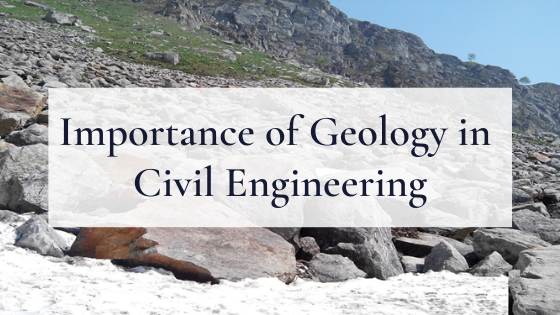Specialized Geotechnical Engineering Solutions for Dummies
Table of ContentsSpecialized Geotechnical Engineering Solutions Things To Know Before You Get ThisHow Specialized Geotechnical Engineering Solutions can Save You Time, Stress, and Money.Facts About Specialized Geotechnical Engineering Solutions RevealedHow Specialized Geotechnical Engineering Solutions can Save You Time, Stress, and Money.About Specialized Geotechnical Engineering SolutionsThe 8-Minute Rule for Specialized Geotechnical Engineering Solutions
William Rankine, an engineer and physicist, created an alternate to Coulomb's earth pressure concept. Albert Atterberg developed the clay uniformity indices that are still used today for soil classification. In 1885, Osborne Reynolds recognized that shearing reasons volumetric expansion of dense products and tightening of loosened granular products. Modern geotechnical engineering is said to have begun in 1925 with the magazine of Erdbaumechanik by Karl von Terzaghi, a mechanical designer and geologist. Terzaghi additionally established the structure for theories of bearing capacity of structures, and the concept for prediction of the rate of negotiation of clay layers due to loan consolidation. Later on, Maurice Biot completely developed the three-dimensional soil loan consolidation concept, prolonging the one-dimensional version previously established by Terzaghi to more general theories and presenting the set of fundamental equations of Poroelasticity.
Geotechnical designers investigate and identify the properties of subsurface problems and materials.
The Definitive Guide to Specialized Geotechnical Engineering Solutions
, which makes use of a thick-walled split spoon sampler, is the most typical way to gather disturbed examples.

Generally, the interface's exact geometry is unidentified, and a simplified user interface geometry is assumed. Limited slopes require three-dimensional models to be analyzed, so most inclines are assessed assuming that they are infinitely broad and can be stood for by two-dimensional versions.
The Ultimate Guide To Specialized Geotechnical Engineering Solutions

Measurement of amounts and evaluation of actual problems. Design alteration per actual conditions The observational method appropriates for construction that has actually currently begun when an unforeseen growth occurs or when a failing or accident looms or has currently happened. It disagrees for jobs whose layout can not be altered during building and construction.
Principles of Geotechnical Engineering. Soil Auto Mechanics and Structures. Disturbed dirt residential properties and geotechnical style, Schofield, Andrew N., Thomas Telford, 2006.
Specialized Geotechnical Engineering Solutions Can Be Fun For Everyone
and Kovacs, W. (1981 ), An Intro to Geotechnical Design, Prentice-Hall, Inc. Deep Scan Tech (2023 ): Deep Scan Technology discovers covert frameworks at the site of Denmark's highest building. "Geofrost Coring". GEOFROST. Obtained 20 November 2020. Han, Jie (2015 ). Concepts and Method of Ground Renovation. Wiley. ISBN 9781118421307. RAJU, V. R.
Ground Improvement Technologies and Case Histories. Singapore: Research Publishing Solutions. p. 809. ISBN 978-981-08-3124-0. Ground Improvement Concepts And Applications In Asia. Pariseau, William G. (2011 ). Layout evaluation in rock mechanics. CRC Press. Hegde, A.M. and Palsule P.S. (2020 ), Performance of Geosynthetics Reinforced Subgrade Subjected to Repeated Automobile Plenties: Experimental and Mathematical Researches.
Cengage Learning, Stamford, 666 p. Atkinson, J., 2007. The technicians of soils and foundations. The Observational Technique in ground design principles and applications.
The smart Trick of Specialized Geotechnical Engineering Solutions That Nobody is Talking About
These records are customized to satisfy the certain demands of a project and include style specifications and suggestions for the building and construction of an array of synthetic frameworks. As offering working as a consultant services covering areas such as slope security and load-bearing abilities for company website various materials, these engineers embark on research study and advancement activities to enhance methods, equipment, materials knowledge and analysis covering entire lifecycles.
Engineering the homes and technicians of rocks consisting of the application of characteristics, liquid technicians, kinematics and material auto mechanics. This brings with each other geology, dirt and rock technicians, and architectural design for the layout and building of structures for a variety of civil engineering jobs. This area entails anticipating the performance of structure dirt and rock to a lots enforced by a structure, while considering efficiency, economic climate and safety and security.
Rates of pay normally enhance as your knowledge and skills expand, with standards pointing to a go to this web-site graduate starting income of between 18,000 and 28,000 per year in the UK. This climbs to 26,000 to 36,000 with a couple of years of experience and afterwards reaching 40,000 to 60,000+ for senior, chartered or master engineers.
Unknown Facts About Specialized Geotechnical Engineering Solutions
With the ideal application it is feasible to master the occupation and gain entrance to a challenging yet gratifying and crucial profession. A rock hound would need to retrain to come to be a geotechnical engineer, although there is a lot of cross-over between the two professions, which might make this much easier. Rock hounds need to have an understanding of dirts, rocks and various other products from a scientific viewpoint, while geotechnical engineers story their knowledge of issues such as dirt and rock mechanic, geophysics and this content hydrology and use them to engineering and ecological tasks.
When starting out, these designers will certainly have a tendency to work with much less intricate tasks, developing expertise and experience ready for even more difficult work later. Geotechnical engineers often tend to be experts in details locations as they grow in experience, focusing on specific frameworks such as trains, roads or water. These designers additionally collaborate with renewable resource, offshore and onshore oil and gas, nuclear power, and much more.